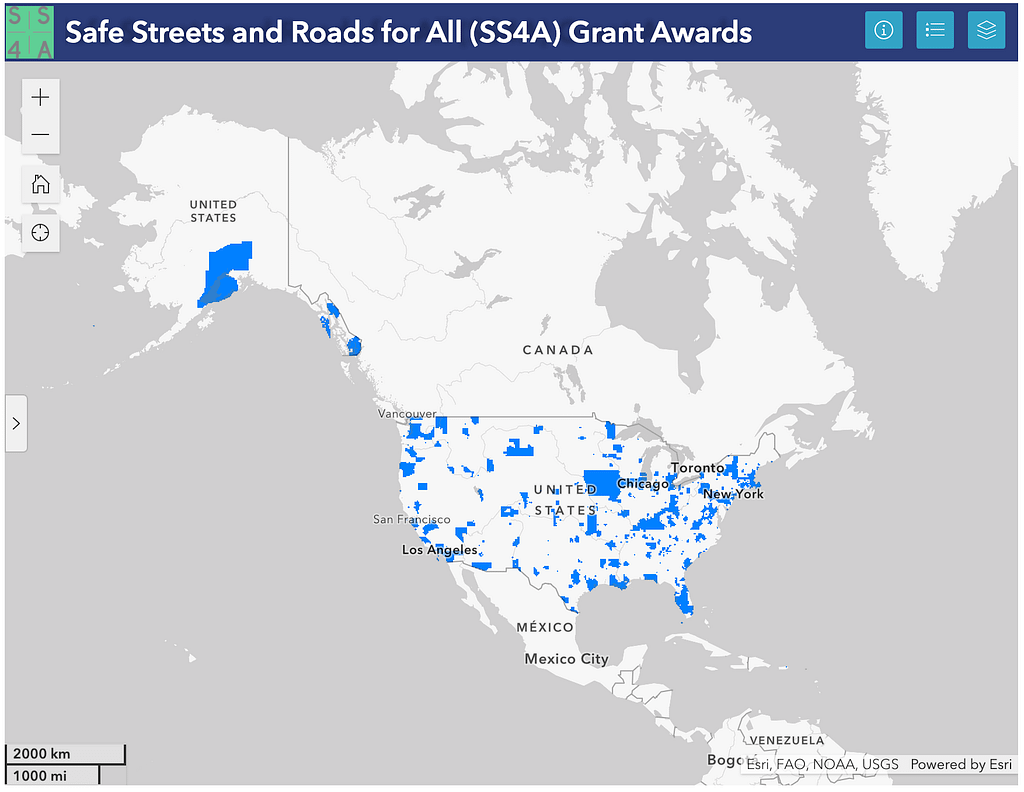SS4A Grants: Resources for Your Proposal
In 2023, the Department of Transportation (DOT) announced $813 million in Safe Streets and Roads for All (SS4A) grants. Did you know that EMS agencies can use these funds to improve their system’s response to roadway crashes?
The EMS Focus webinar, “Leveraging DOT Grant Funds for EMS Crash Response Improvement'', held in early 2024, reviewed opportunities and requirements for the Safe Streets and Roads for All (SS4A) grant program with over $3 billion still available for future funding. SS4A funds have been awarded during the first two years of the program to improve EMS response to motor vehicle crashes. The webinar was led by Gam Wijetunge, Director, NHTSA's Office of EMS, and featured panelists Paul Teicher, Senior Policy Analyst, DOT - Office of the Secretary, and Bruce Evans, MPA, CFO, NRP, SPO, Fire Chief of the Upper Pine River Fire Protection District in Colorado.
In February, the DOT announced three deadlines for fiscal year 2024 Notice of Funding Opportunity for the SS4A grant program. Deadlines vary depending on the type of grant. The upcoming deadlines are:
Planning and Demonstration Grants
May 16, 2024, 5 p.m. (EDT)
August 29, 2024, 5 p.m. (EDT)
Implementation Grant Deadline
May 16, 2024, 5 p.m. (EDT)
The webinar shared data about the country’s national roadway safety problem. An estimated 42,514 people died on our streets and roadways in 2022, and while the rate of fatalities among all road users continues to climb, the rate for pedestrians and bicyclists is increasing even faster than that of drivers and passengers.
Post-crash care—the role of EMS and your colleagues in 911—is a critical part of the solution to reducing the rates of death and serious injury. That’s why EMS is essential to the DOT’s National Roadway Safety Strategy and the five-part Safe System Approach. “In the first responder community, EMS can take what may have been a fatality—a life lost—to a serious injury and from a serious injury to perhaps a minor injury,” noted DOT’s Paul Teicher.
With that in mind, the DOT’s SS4A grants encourage EMS systems to develop plans to address roadway crashes in their community and apply for planning and demonstration grants to make those plans a reality. Eligible recipients include a political subdivision of a state (such as a county, city, town, borough or special district), metropolitan planning organizations, and federally recognized tribal governments.
Teicher explained that grant-eligible work breaks down into two main categories; the first is developing a comprehensive safety plan. “This is identifying your biggest safety risks, what your problems are, and engaging your community,” he said. “Then you figure out what solutions you want to do and implement those. Safe Streets and Roads for All provides funding for both the planning part and the implementation.”
Teicher also called the SS4A program unique in that “it cuts across all different types of interventions. So, it could be infrastructure or behavioral or operational…SS4A action plans should consider all types of interventions, including operational and post-crash care activities.” This can include changes that reduce response times, improvements to Emergency Medical Dispatch and on-scene EMS care, traffic-signal preemption and prioritization, among many other evidence-based EMS or 911 countermeasures.
The webinar also covered the stages of developing an action plan, demonstration activities, supplemental planning, and project implementation (to give systems a more detailed idea of how to prepare their proposal), sharing grant selection criteria and other considerations. DOT offers its own webinar series for SS4A grants, as well as a FAQ and other resources.
In FY 2023, nearly $900 million in funding was awarded to 620 regional, local and tribal communities. One of those was the 282-square-mile Upper Pine River Fire Protection District in rural Colorado, which received $201,500 in FY 2022 to develop a comprehensive safety action plan. Chief Evans leads one of the first EMS agencies to secure funding through SS4A and shared his experience of creating an action plan that focused on traffic incident management (TIM) training to reduce EMS providers being struck and killed when providing roadside care and upgrading their department’s extrication tools.
“Those are all things that are fair game in a post-crash care world,” noted Evans, adding that Upper Pine River also looked at other factors in their community, such as adding guardrails or barriers on high-risk stretches of road, examining near-miss data as well as crash data, and reducing speed limits in areas where collisions are more common. Evans encouraged agencies to focus not only on post-crash care: “There are a lot of other things to pursue, like safer driving and seat belt usage,” he stressed. “Use a little bit of creativity and use the data that’s out there from FARS (Fatality Analysis Reporting System) and NEMSIS (National EMS Information System).”
Don’t have time or resources to apply for a grant this year? Mentioned briefly during the webinar is the option for an EMS agency to connect with a municipal planning organization (MPO) in a community that received an SS4A planning grant to encourage them to consider the role that EMS can play in the community plan. Engaging during the planning process opens the opportunity for inclusion in future implementation grant opportunities.
You can watch the recorded webinar, access the slide deck that was presented and read the full transcript of the webinar at ems.gov, where you can also sign up for future EMS Focus webinars, which are held quarterly. General information about the SS4A program.




